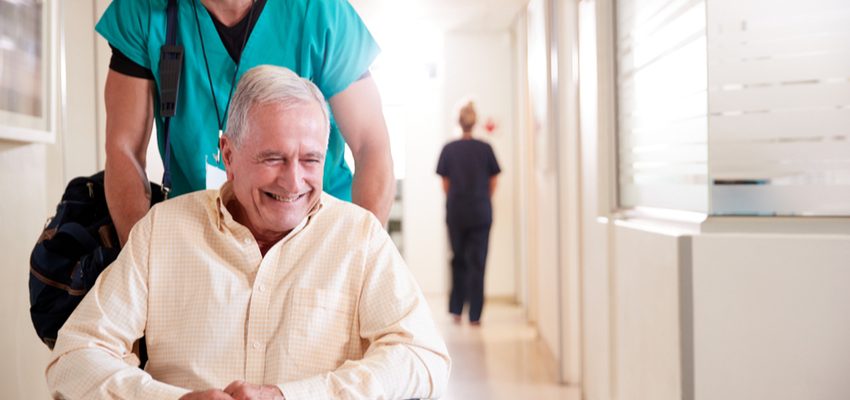Blog

Senior Safety: Tips For Preventing Falls And Accidents
June 14, 2025 0 Comment Category: Care Center
Senior Rehab Facilities
As people age, maintaining safety becomes a vital part of everyday life—especially when it comes to preventing falls and accidents. According to the Centers for Disease Control and Prevention (CDC), falls are the leading cause of injury among adults aged 65 and older. While falls can lead to serious injuries such as hip fractures and head trauma, the good news is that many of these accidents are preventable with the right strategies.
This comprehensive guide will explore effective tips and techniques to help seniors live more safely and confidently, whether at home or in assisted living communities.
Why Fall Prevention Is Crucial for Seniors
Aging often comes with physical changes such as reduced muscle strength, poor balance, vision impairment, and slower reaction times. These factors contribute to a higher risk of falls, which can result in:
-
Loss of mobility or independence
-
Long-term hospitalization or rehabilitation
-
Emotional distress, including fear of falling again
-
Increased financial burden due to medical expenses
Being proactive about safety can significantly improve a senior’s quality of life, reduce medical costs, and promote greater independence.
Home Safety Tips for Preventing Falls
1. Clear Clutter and Pathways
Tripping hazards are a major cause of falls. Remove unnecessary furniture, electrical cords, throw rugs, and other items that could obstruct walkways. Keep hallways and staircases free of clutter and well-lit.
2. Install Grab Bars and Handrails
Install sturdy grab bars in the bathroom near the toilet and inside the shower or tub. Handrails should be present on both sides of staircases, and steps should be in good condition.
3. Improve Lighting Throughout the Home
Seniors with visual impairments may struggle in dimly lit areas. Use brighter bulbs, add night lights in hallways and bathrooms, and ensure all rooms have easy-to-reach light switches.
4. Non-Slip Flooring
Ensure all floors are slip-resistant. Use non-slip mats in the bathroom and kitchen, and avoid waxed floors, which can be dangerously slick.
5. Adjust Furniture Height
Make sure chairs and beds are at the appropriate height to allow easy standing and sitting. Low or unstable furniture can contribute to balance issues.
Personal Health and Lifestyle Modifications
1. Stay Physically Active
Regular exercise helps maintain strength, balance, and coordination. Programs like tai chi, yoga, or strength training are particularly beneficial for fall prevention.
2. Get Regular Vision and Hearing Checks
Poor eyesight and hearing can lead to accidents. Ensure glasses prescriptions are up to date and hearing aids are functioning properly.
3. Manage Medications Carefully
Some medications or combinations of drugs can cause dizziness or drowsiness. A healthcare provider or pharmacist should review all medications periodically to avoid interactions and side effects.
4. Maintain a Healthy Diet
Proper nutrition supports bone health and overall strength. Ensure adequate intake of calcium, vitamin D, and protein to help prevent bone loss and muscle weakness.
5. Stay Hydrated
Dehydration can lead to dizziness and confusion. Encourage consistent fluid intake, especially during hot weather or if medications have diuretic effects.
Safety Tips for Assisted Living and Senior Communities
Assisted living communities are designed with senior safety in mind, but precautions are still necessary:
1. Participate in Fall Risk Assessments
Many communities offer regular assessments to identify individuals at higher risk of falling. These evaluations help tailor personalized safety and care plans.
2. Take Advantage of Mobility Aids
Walkers, canes, and wheelchairs are important tools. Ensure these devices are properly fitted and that the senior knows how to use them correctly.
3. Utilize Emergency Call Systems
Seniors should always wear or have access to emergency alert buttons provided by the facility. In case of a fall, help can be summoned immediately.
4. Join Wellness and Balance Programs
Group exercise programs designed for fall prevention are common in senior communities. Encourage regular participation for strength and confidence building.
Emotional and Mental Considerations
1. Address Fear of Falling
Some seniors develop a fear of falling that causes them to restrict movement, which ironically increases fall risk due to reduced mobility. Support from family, therapists, or community staff can help rebuild confidence.
2. Educate and Empower
Understanding the causes and prevention strategies of falls empowers seniors to take ownership of their safety. Education sessions and wellness talks can be highly beneficial.
Family and Caregiver Involvement
Family members and caregivers play a crucial role in senior safety:
-
Regularly check on the home environment for new risks
-
Encourage participation in physical activity and medical appointments
-
Be proactive about any changes in mobility, behavior, or health
If caregiving at home becomes challenging, exploring options such as adult day care or assisted living facilities in Pasadena and nearby areas can offer the needed support while ensuring safety.
Conclusion: Fall Prevention Is a Shared Responsibility
Preventing falls and accidents among seniors is not just a personal matter—it involves family, caregivers, healthcare providers, and senior living communities working together. With the right measures, older adults can enjoy a safe, active, and independent life.
Remember: Small changes today can prevent big problems tomorrow.
For families exploring safe living options for their loved ones, choosing a reputable facility like Foothill Skilled Nursing & Wellness Center in Pasadena ensures not just care, but confidence in daily life.

leave A comment